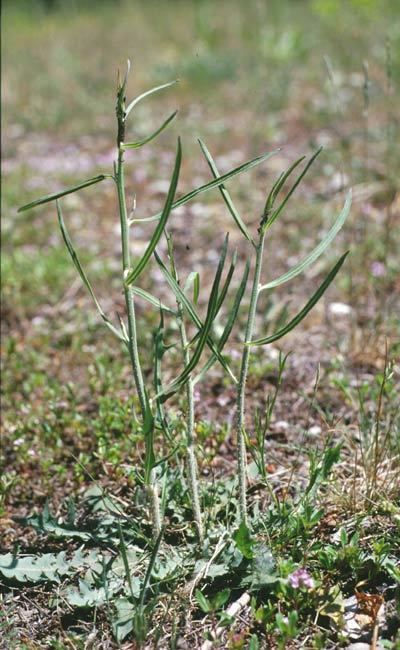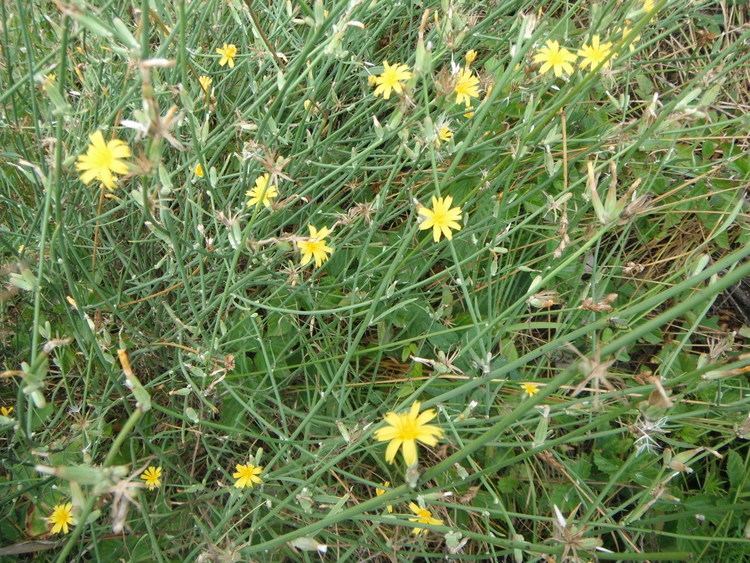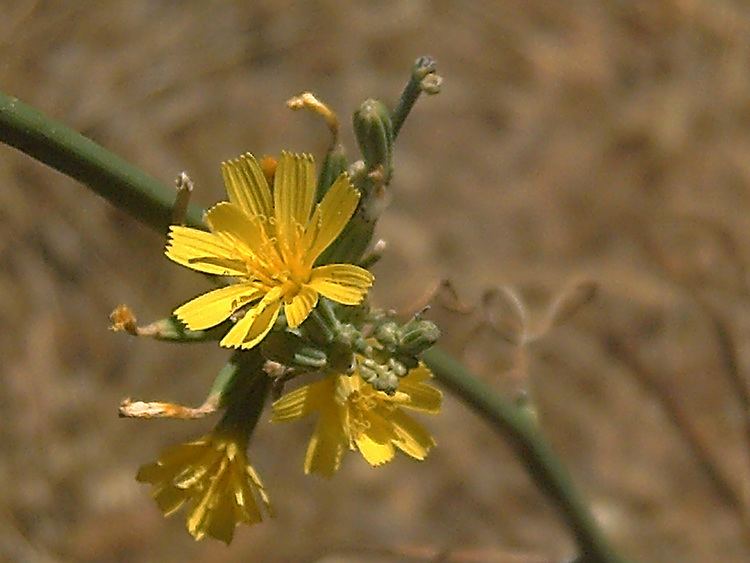Rank Species | Genus Chondrilla Higher classification Chondrilla | |
 | ||
Similar Chondrilla, Daisy family, Centaurea solstitialis, Centaurea diffusa, Linaria dalmatica | ||
Knikbloem chondrilla juncea 2016 07 16
Chondrilla juncea is a species of flowering plant in the daisy family known by a number of common names, including rush skeletonweed, gum succory, devil's grass, and nakedweed. The plant is native to Europe, Asia, and North Africa, but it is known throughout most temperate regions of the world as an introduced species which is usually considered a noxious weed.
It is a thin, spindly plant which reaches a meter in height. It starts from a basal rosette of leaves and branches extensively, often forming a weedy thicket. It produces small daisylike flowers with rectangular yellow ray florets. The fruit is an achene about a centimeter long topped with a white pappus. It reproduces by seed but also by cloning itself at the root; tilling of soil and chopping up plants actually help this species disperse by sectioning and distributing root parts.

This plant is considered a very troublesome weed in many areas. It easily invades fields, clogs harvesting machines, and successfully competes with other plants for water. There are several biological control measures used against this plant. The skeletonweed gall midge (Cystiphora schmidti - an insect), the skeletonweed gall mite (Aceria chondrillae - an arachnid), and skeletonweed rust (Puccinia chondrillina - a fungus) all show potential for controlling infestations.

In the Greek island of Crete the leaves and the tender shoots of a local variety called ampelosyrida (αμπελοσυρίδα) or glykosyrida (γλυκοσυρίδα) are eaten raw or boiled in salads by the locals. The plant is also traditionally consumed by ethnic Albanians (Arbëreshë) in the Vulture area (southern Italy). According to research (2002) by A. Pieroni, V. Janiak, C. M. Dürr, S. Lüdeke, E. Trachsel and M. Heinrich in the Centre for Pharmacognosy and Phytotherapy (The School of Pharmacy, University of London), Chondrilla juncea probably has a strong anti-oxidant activity and potential for medicinal use. The strong XO-inhibiting activity shown by extracts of the aerial parts of the plant has been reported in this research for the first time, and merits further investigation focusing on natural products with potential effects on hyperuricaemia and gout.



